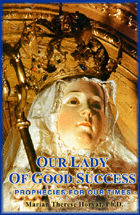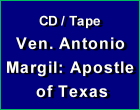Stories & Legends
 |
 |
 |
 |
 |
 |
 |
St. Patrick Converts the King’s Daughters
Before leaving Cavan, St. Patrick founded a church on the spot where he had overthrown the idols. Then, turning his face westward, he passed over the Shannon into Connaught, near the present day Clonmacnoise in County Offaly on the River Shannon.
Then, we find him again in relations with members of the reigning royal family. Ethna and Fidelm, the two daughters of King Laeghaire, were living at Cruachan, the ancient capital of Connacht and residence of the kings. This palace set near the place now occupied by the village of Tulsk in Roscommon. Two of the King’s Druids, Mael and Caplait, were appointed to guard and educate the royal maidens.
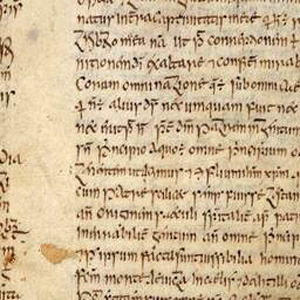 The account of their interview with St. Patrick supplies us with an example of his style of preaching that is more in accordance with the spirit of the Confession than any other of his recorded utterances.
The account of their interview with St. Patrick supplies us with an example of his style of preaching that is more in accordance with the spirit of the Confession than any other of his recorded utterances.
The Saint’s sermon, or rather catechetical instruction, is given in almost identically the same form in the Book of Armagh, the Tripartite Life of St. Patrick, and an ancient Life of Saints Ethna and Fidelm in Fr. John Colgan’s Collection (Acta Sanctorum Hiberniae, die xi, Januarii). The last account, which is specially praised by this great authority for its copiousness and exactitude, is the one that has been followed.
This writer tells us that, on his journey westward, St. Patrick arrived with a numerous attendance of clerics at a fountain called Clibech (today called the Ogulla Well) near Cruachan, where he halted. There, with his followers, the Saint began to sing the praises of God.
From the narrative, it would seem that they had spent the night in prayer. For it goes on to say that, as the morning dawned, Ethna and Fidelm, the daughters of the King, arrived at the fountain. They were filled with astonishment, supposing the strangers to be beings of another world. But that there was nothing in their appearance or voices calculated to inspire terror is evident from the fearless bearing of the royal maidens.
Since St. Patrick’s fame had spread far and wide after the contest at Tara, there can be no doubt that they soon realized who St. Patrick was. At once they began to interrogate the white-robed band. The royal maidens asked them from whence they came and whither they were going. They inquired whether they came from the spirits who dwell beneath the earth or from those who lived in the heavens.
Then, says the ancient writer: “Patrick, the glorious herald of Christ, answered: ‘You have no need to be solicitous about our origin or the place of our abode. It would be better for you to inquire about our true and only God, the Maker of all creatures in heaven and on earth.’
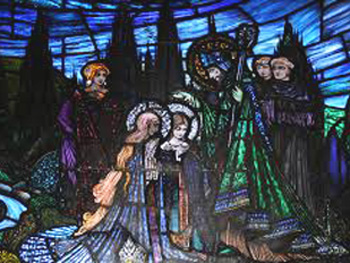 “Then the elder sister said: ‘Who is this God of yours and where does He dwell? Lives He above the skies, or beneath them, or upon the earth? In mountains or in valleys, or perhaps His dwelling is in the sea, or in the rivers? Has He daughters and sons whose forms are beautiful? Is He rich in silver and gold and does His kingdom overflow with all treasures? In what manner is He to be worshipped: as one in the flower of life or as one laden with years? Has His life a fixed limit or is it interminable?’
“Then the elder sister said: ‘Who is this God of yours and where does He dwell? Lives He above the skies, or beneath them, or upon the earth? In mountains or in valleys, or perhaps His dwelling is in the sea, or in the rivers? Has He daughters and sons whose forms are beautiful? Is He rich in silver and gold and does His kingdom overflow with all treasures? In what manner is He to be worshipped: as one in the flower of life or as one laden with years? Has His life a fixed limit or is it interminable?’
“Then, the man in whom was the plenitude of God replied:
“‘Our God is the God of all things; the God of heaven and earth; the God of the sea, and of the rivers; the God of the sun, the moon, and the stars; the God of high mountains and of lowly valleys; the God who is above the heavens, in the heavens, and beneath the heavens. He has many mansions in heaven, on the earth, in the sea, and in all things that exist within their compass. From Him are the sun and moon, the luminaries of the world, and by Him is their light infused. His hand has brought forth the rivers and fountains from the earth, and the islands from the sea.
“’He has a Son coequal with the Father; for the Father is not prior to the Son, neither is the Son subsequent to the Father. Also, there is the Holy Spirit who proceeds from the Father and the Son, in the same eternity and equality, and these three are one, and inseparable. Wherefore, as you are daughters of an earthly King, it is fitting that you should aspire to those espousals which last forever in endless joys, rather than wait for an ignoble union with husbands from whom you must soon separate, or be separated.’
“Pierced by these words as if by arrows, the virgins, as it were with one heart and one voice replied: ‘In your compassion, teach us how we may obtain the favor of so great a King, and do His will, or see Him face to face. Whatsoever commands you impose upon us we will gladly obey.’
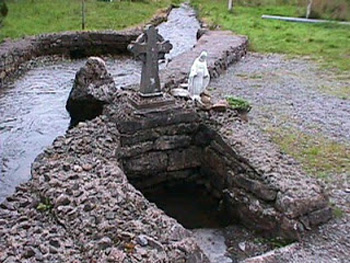 “’Do you believe,’ said the holy man, ‘that by the power of so great a King all your sins and offences can be remitted by the pouring of water? Or that if sins are committed after this outpouring, they can be blotted out and atoned for by penance?’
“’Do you believe,’ said the holy man, ‘that by the power of so great a King all your sins and offences can be remitted by the pouring of water? Or that if sins are committed after this outpouring, they can be blotted out and atoned for by penance?’
“And when the virgins, anointed with the grace of the Holy Spirit, replied that they were prepared to believe these and the other mysteries of the Faith which was preached to them, not only were they baptized by the holy man, but likewise, by the reception of the sacred veil from the hand of St. Patrick, they were still more closely united to the Heavenly Spouse.
“Then, as their ardor increased to see the Spouse face to face, the holy man said: ‘As long as you are clothed in this mortal flesh you cannot see the Son of God. Before you can see Him in the brightness of His majesty, the vesture of this corruptible body must be laid aside. Moreover, His Body and Blood, hidden and invisible under the visible form and appearance of bread and wine, must be first received.’
“At these words the virgins, burning with a still more ardent fire of love, earnestly asked that they might receive the Sacrament of the Body and Blood of Christ, and that, laying aside the burden of the flesh, they might be transported into that Presence which, above all things, they longed to behold.
“The holy man, to whom the divine decrees were revealed, assented, and the virgins, having received the saving Viaticum, lay down on the same couch, and, as if resting and sweetly reposing in the Lord, passed to that marriage feast of the Heavenly Spouse so ardently desired.”
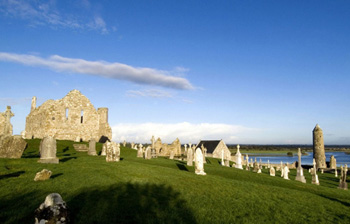 All the ancient narratives tell us that the Princesses’ instructors, Mael and Caplait, soon appeared on the scene. The account given of their conduct is a remarkable illustration of the way in which, at this time, St. Patrick’s supernatural authority seems to have quelled every idea of violent resistance in the minds of his opponents.
All the ancient narratives tell us that the Princesses’ instructors, Mael and Caplait, soon appeared on the scene. The account given of their conduct is a remarkable illustration of the way in which, at this time, St. Patrick’s supernatural authority seems to have quelled every idea of violent resistance in the minds of his opponents.
These Druids were brothers, and Caplait, who was the first to arrive, wept bitterly and complained that St. Patrick, not satisfied with separating the King’s daughters from the gods of their nation, had also taken them away from the world itself. Before long, however, he and his brother were subdued by the Saint’s words, and became converts to Christianity.”
Eithna and Fidelm were baptized at Oguila Well in the year 432, and the Ogulla Well is an established place of pilgrimage with hundreds of visitors traveling there every year.
*
We know enough now of St. Patrick to understand that his words and actions were heroic in the highest sense of the word, having the power to lift others to the same level. Sudden conversions, with the unhesitating acceptance of all the consequences of faith, have been phenomena of conquering grace in all ages. Such was the great St. Patrick, who worked marvelous conversions wherever he set foot in the Emerald Isle.

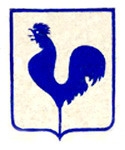
Then, we find him again in relations with members of the reigning royal family. Ethna and Fidelm, the two daughters of King Laeghaire, were living at Cruachan, the ancient capital of Connacht and residence of the kings. This palace set near the place now occupied by the village of Tulsk in Roscommon. Two of the King’s Druids, Mael and Caplait, were appointed to guard and educate the royal maidens.

The account of the conversion is in the 9th century Book of Armagh, also known as the Canon of Patrick
The Saint’s sermon, or rather catechetical instruction, is given in almost identically the same form in the Book of Armagh, the Tripartite Life of St. Patrick, and an ancient Life of Saints Ethna and Fidelm in Fr. John Colgan’s Collection (Acta Sanctorum Hiberniae, die xi, Januarii). The last account, which is specially praised by this great authority for its copiousness and exactitude, is the one that has been followed.
This writer tells us that, on his journey westward, St. Patrick arrived with a numerous attendance of clerics at a fountain called Clibech (today called the Ogulla Well) near Cruachan, where he halted. There, with his followers, the Saint began to sing the praises of God.
From the narrative, it would seem that they had spent the night in prayer. For it goes on to say that, as the morning dawned, Ethna and Fidelm, the daughters of the King, arrived at the fountain. They were filled with astonishment, supposing the strangers to be beings of another world. But that there was nothing in their appearance or voices calculated to inspire terror is evident from the fearless bearing of the royal maidens.
Since St. Patrick’s fame had spread far and wide after the contest at Tara, there can be no doubt that they soon realized who St. Patrick was. At once they began to interrogate the white-robed band. The royal maidens asked them from whence they came and whither they were going. They inquired whether they came from the spirits who dwell beneath the earth or from those who lived in the heavens.
Then, says the ancient writer: “Patrick, the glorious herald of Christ, answered: ‘You have no need to be solicitous about our origin or the place of our abode. It would be better for you to inquire about our true and only God, the Maker of all creatures in heaven and on earth.’

St. Patrick baptizing the princesses, Eithne and Fidelma
“Then, the man in whom was the plenitude of God replied:
“‘Our God is the God of all things; the God of heaven and earth; the God of the sea, and of the rivers; the God of the sun, the moon, and the stars; the God of high mountains and of lowly valleys; the God who is above the heavens, in the heavens, and beneath the heavens. He has many mansions in heaven, on the earth, in the sea, and in all things that exist within their compass. From Him are the sun and moon, the luminaries of the world, and by Him is their light infused. His hand has brought forth the rivers and fountains from the earth, and the islands from the sea.
“’He has a Son coequal with the Father; for the Father is not prior to the Son, neither is the Son subsequent to the Father. Also, there is the Holy Spirit who proceeds from the Father and the Son, in the same eternity and equality, and these three are one, and inseparable. Wherefore, as you are daughters of an earthly King, it is fitting that you should aspire to those espousals which last forever in endless joys, rather than wait for an ignoble union with husbands from whom you must soon separate, or be separated.’
“Pierced by these words as if by arrows, the virgins, as it were with one heart and one voice replied: ‘In your compassion, teach us how we may obtain the favor of so great a King, and do His will, or see Him face to face. Whatsoever commands you impose upon us we will gladly obey.’

The Ogulla Well and Shrine attracts many pilgrims from throughout Ireland
“And when the virgins, anointed with the grace of the Holy Spirit, replied that they were prepared to believe these and the other mysteries of the Faith which was preached to them, not only were they baptized by the holy man, but likewise, by the reception of the sacred veil from the hand of St. Patrick, they were still more closely united to the Heavenly Spouse.
“Then, as their ardor increased to see the Spouse face to face, the holy man said: ‘As long as you are clothed in this mortal flesh you cannot see the Son of God. Before you can see Him in the brightness of His majesty, the vesture of this corruptible body must be laid aside. Moreover, His Body and Blood, hidden and invisible under the visible form and appearance of bread and wine, must be first received.’
“At these words the virgins, burning with a still more ardent fire of love, earnestly asked that they might receive the Sacrament of the Body and Blood of Christ, and that, laying aside the burden of the flesh, they might be transported into that Presence which, above all things, they longed to behold.
“The holy man, to whom the divine decrees were revealed, assented, and the virgins, having received the saving Viaticum, lay down on the same couch, and, as if resting and sweetly reposing in the Lord, passed to that marriage feast of the Heavenly Spouse so ardently desired.”

Ruins of ancient churches in Clonmacnoise in County Offaly where St. Patrick preached
These Druids were brothers, and Caplait, who was the first to arrive, wept bitterly and complained that St. Patrick, not satisfied with separating the King’s daughters from the gods of their nation, had also taken them away from the world itself. Before long, however, he and his brother were subdued by the Saint’s words, and became converts to Christianity.”
Eithna and Fidelm were baptized at Oguila Well in the year 432, and the Ogulla Well is an established place of pilgrimage with hundreds of visitors traveling there every year.
We know enough now of St. Patrick to understand that his words and actions were heroic in the highest sense of the word, having the power to lift others to the same level. Sudden conversions, with the unhesitating acceptance of all the consequences of faith, have been phenomena of conquering grace in all ages. Such was the great St. Patrick, who worked marvelous conversions wherever he set foot in the Emerald Isle.

Adapted from William B. Morris, The Life of St. Patrick, Apostle of Ireland,
London: Burns and Oates, 1878, Appendix, pp. 200-208
Posted March 15, 2014
London: Burns and Oates, 1878, Appendix, pp. 200-208
Posted March 15, 2014





